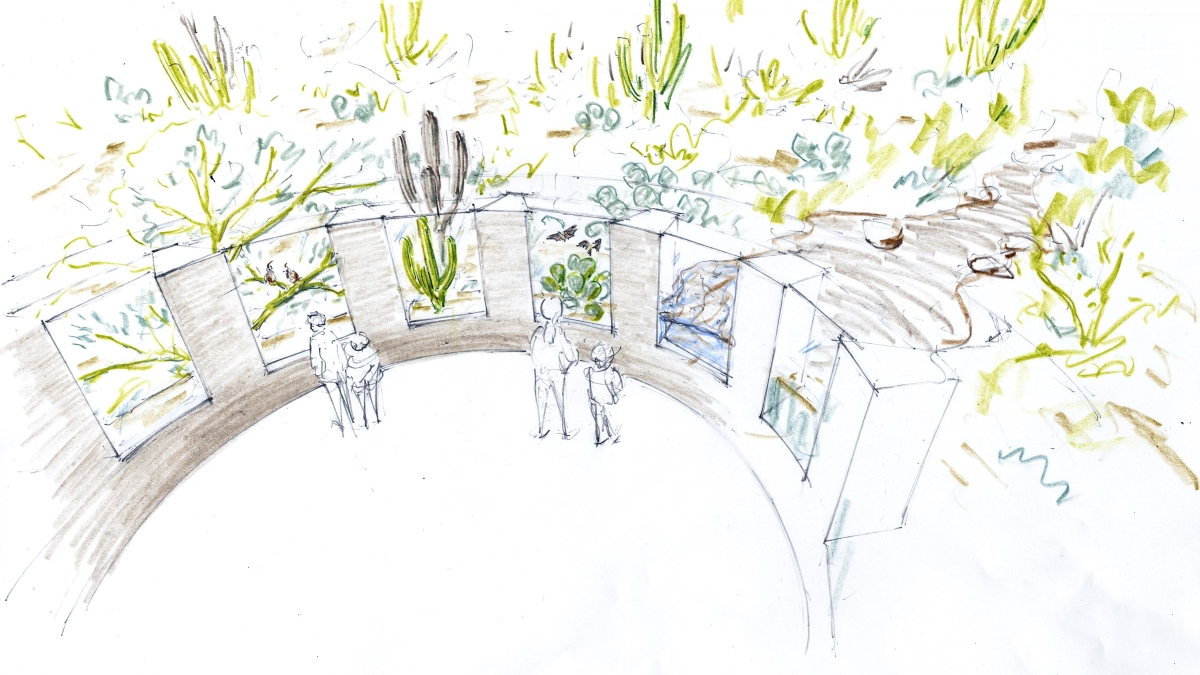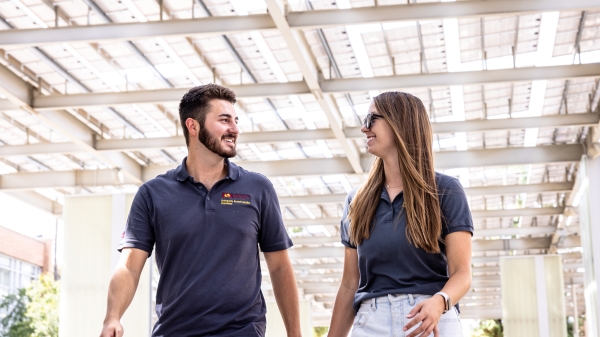ASU center to teach community about thriving in a desert

An artist's rendering of an exhibit at Scottsdale's Desert Discovery Center. Image Provided by Desert Discovery Center Scottsdale
There’s nothing new about Arizona residents looking for sustainable ways to live in the desert, but a recent United Nations report has made the matter a worldwide concern.
Because of climate change, the UN says that by 2030 almost half of the global population will be living in “areas of high water stress,” and that without intervention as many as 700 million people could find themselves displaced.
Enter ASU and its partnership with Scottsdale’s future Desert Discovery Center, aimed at creating an expansive research center to teach “a global audience to value, thrive in and conserve desert environments.”
“When people think of research they think of a classroom,” said Sam Campana, executive director of the center and former mayor of Scottsdale. “It is our goal to not have a classroom, but a living laboratory where people are out and doing work that is not only important to those who live here but anyone in an arid environment.”
Aside from research, the center will have a public face, and ASU has been working with design firm Thinc to create a series of exhibits to address “what I can see, what I can’t see and what does all of it mean?” Campana said. In total, it will create an experience that shows how we can be more in tune with our environment.
Thinc, according to its website, has become known for a “holistic approach” that “combines great design and execution with broad insight into the organizational, cultural and physical contexts surrounding a project.” The firm has worked with museums, science centers, zoos and aquariums.
The center’s research will come as the global population grows “mainly in regions that are already experiencing water stress and in areas with limited access to safe drinking water,” according to the UN in a 2014 study.
Research collaborations could include water quality, use and supply, as well as climate-change adaptation and urbanization.
Other areas of focus will include soil-crust research, desert species, the intersection of open-space preserves and people.
“There are things going on in the desert that are in the deep in the crust, and they’re teeming with life,” said Duke Reiter, executive director of University City Exchange. “But without this research and a sophisticated guide, at both at a macro and micro scale, it would be impossible to see. Only the university could bring this component.”
Campana said 10 laboratories are expected to be associated with the center. Researchers, brought in by ASU, will study desert-life sustainability, “an important step in preserving and understanding this land,” said Duke Reiter, whose exchange tracks university’s academic and research assets to apply them “for the greater good.”
Desert Discovery Center leaders are clearing hurdles as they await approval from the city of Scottsdale.
“If you look at ASU’s design’s aspirations, this university takes its commitment to their community, applied research and sustainability very seriously,” Reiter said, “which is what makes this is a great venue and leaves no reason for us to not be involved in this.”
More Environment and sustainability

Charles Redman, founder of the School of Sustainability, faces a new adventure: Retirement
At the retirement celebration for Charles Redman on Oct. 22, two messages persisted: Redman’s contributions to Arizona State…

10 climate insights to guide our future
A group of globally renowned social, natural and climate scientists has once again convened to offer their newest annual…

The future is green: Job demand translates to high employability for ASU sustainability grads
A 2023 report by Forbes on the state of green jobs confirmed what Arizona State University has been trumpeting for years:…